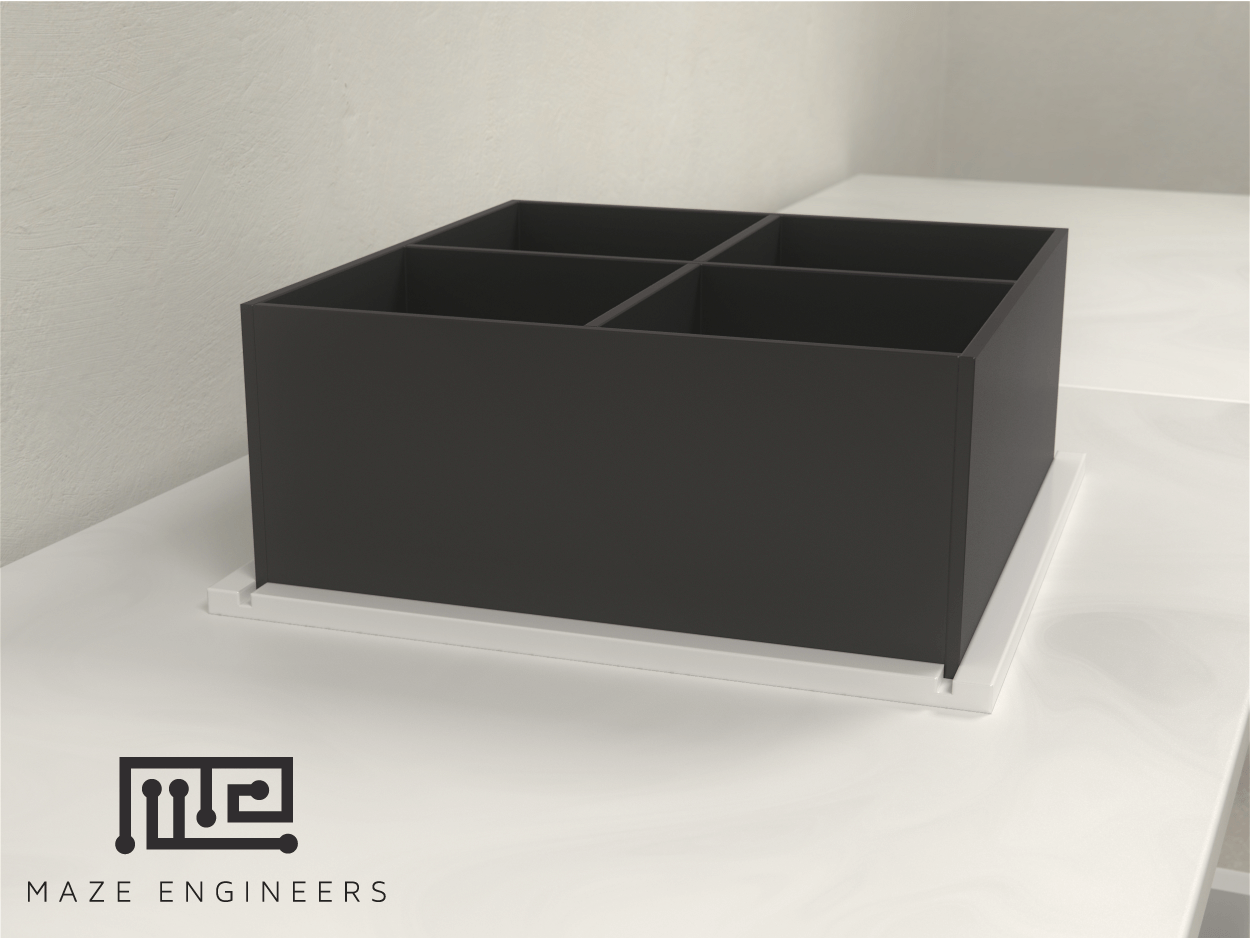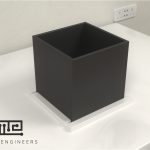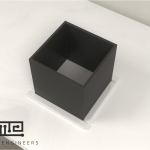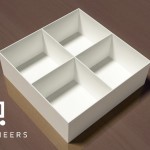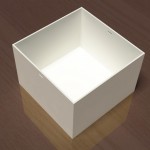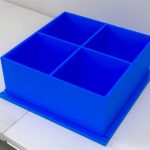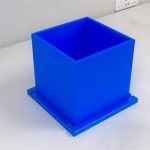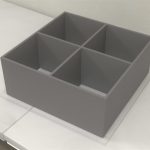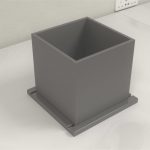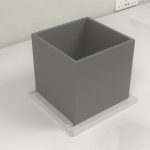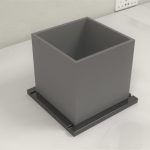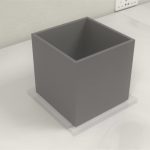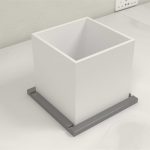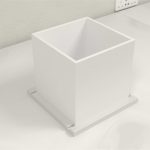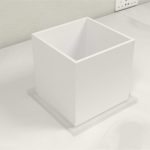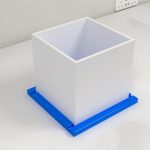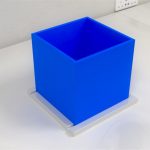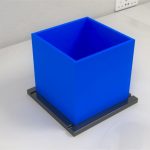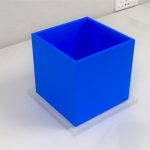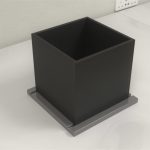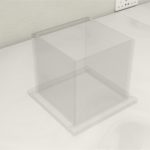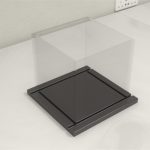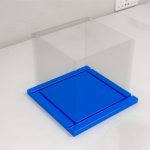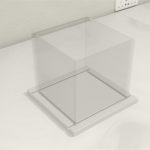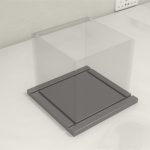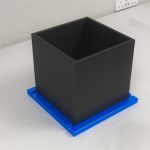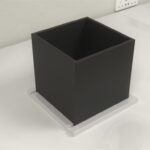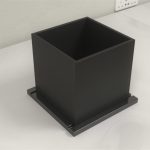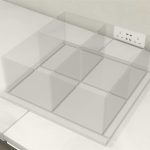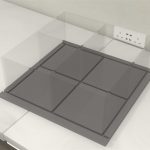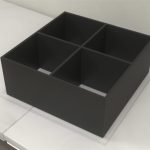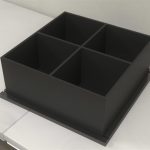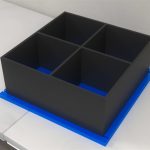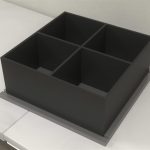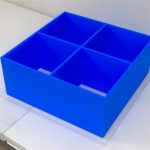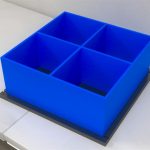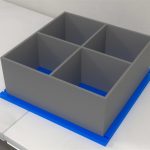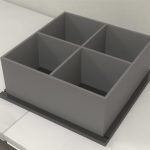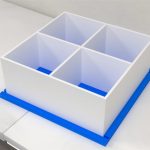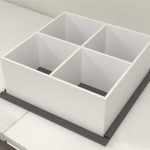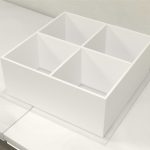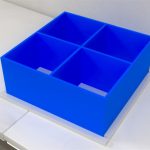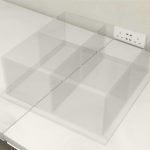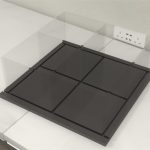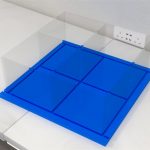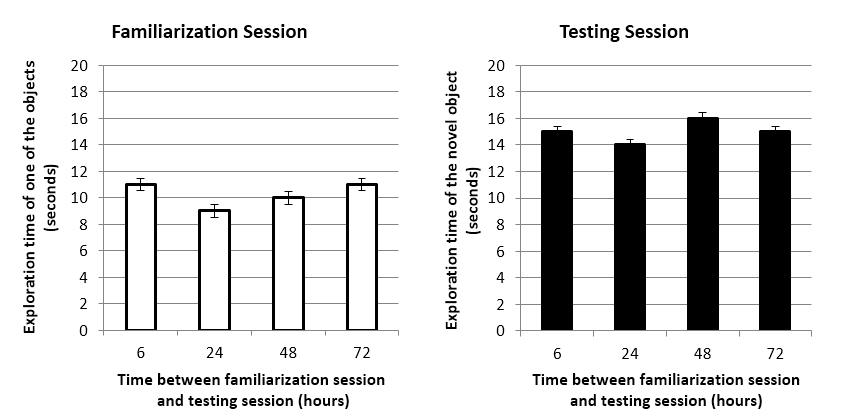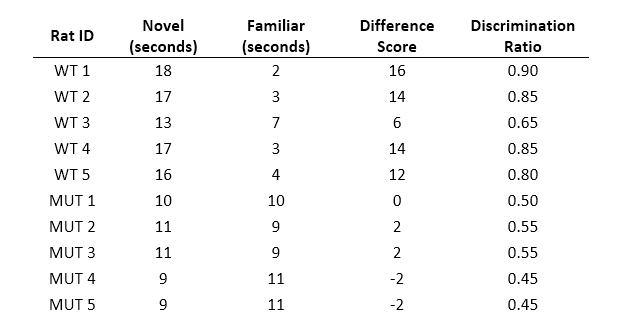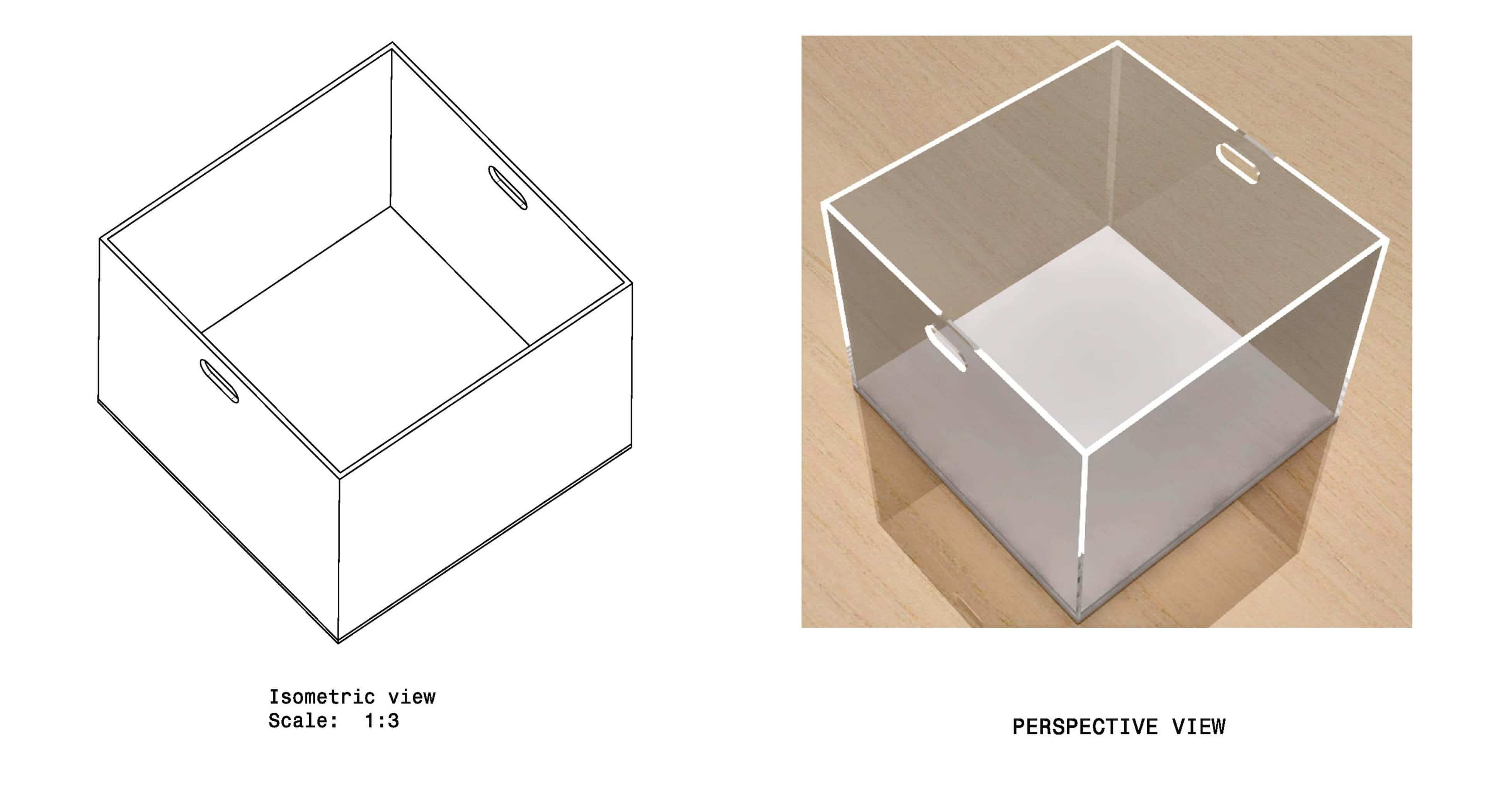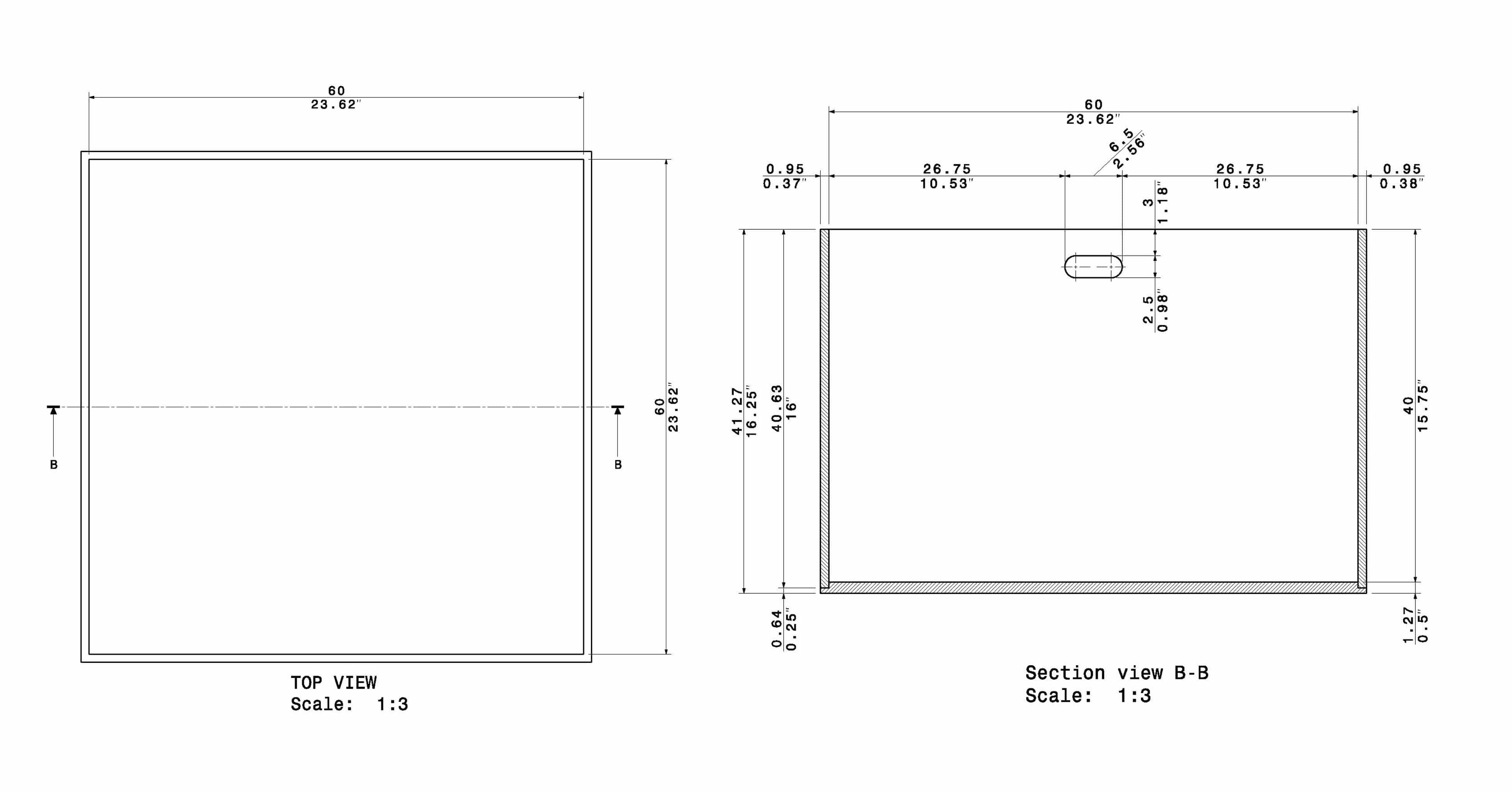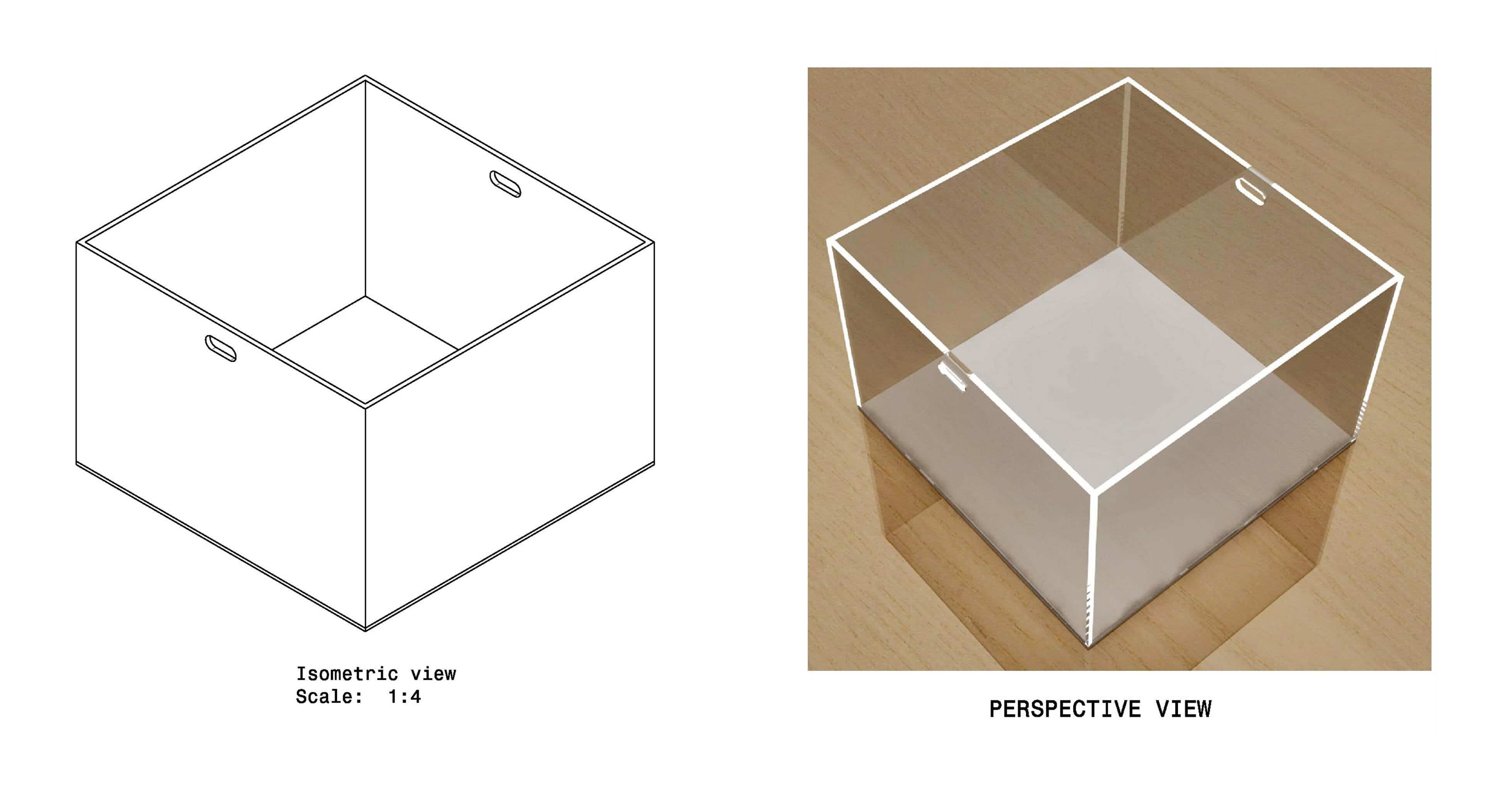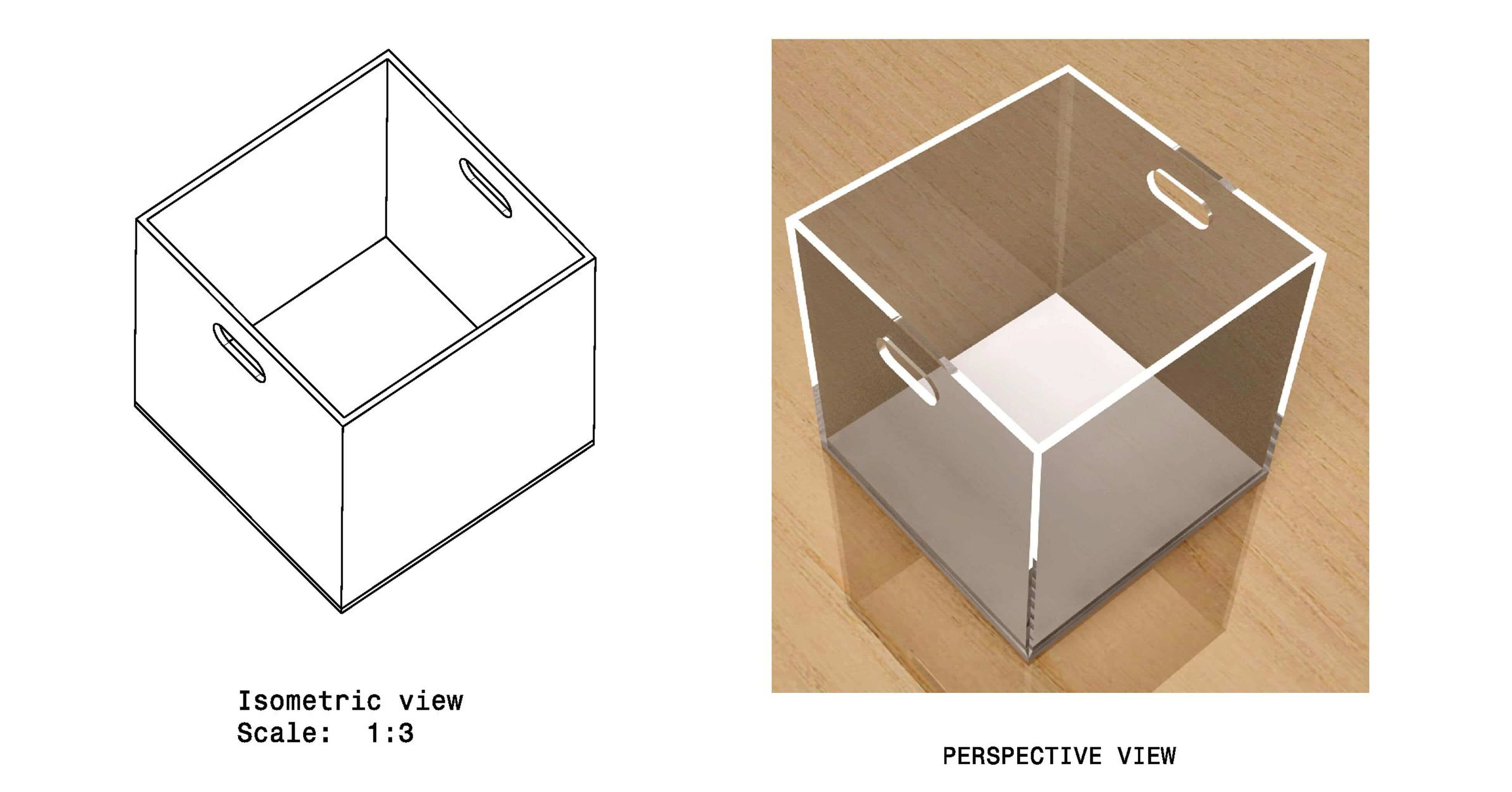The Novel Object Recognition test is based on the tendency for rodents such as rats and mice to interact more with a novel object than with a familiar object. Animals are first placed in an Open Field apparatus and allowed to explore an object (not included). After a prescribed interval, the animal is returned to the novel object apparatus, which contains the familiar object and a novel object. Object recognition is distinguished by more time spent interacting with the novel object. We highly recommend using disposable, reusable objects to minimize distraction cues such as odor.
Our NOR is compatible with all major video tracking and analysis packages including our complete tracking and analysis package ConductVision, Noldus Ethovision XT,and ANY-Maze.
Prices and Sizes
Mouse
$ 590
+ Shipping and Handling (approx $100)- Removable base for easy clean
- Acrylic
- Easy clean with 70% Ethanol
- Matte Finish for non shine
- No odors
Rat
$ 790
+ Shipping and Handling (approx $150)- Removable base for easy clean
- Acrylic
- Easy clean with 70% Ethanol
- Matte Finish for non shine
- No odors
XS (Stroke)
$ 440
+ Shipping and Handling (approx $80)- Removable base for easy clean
- Large singular box can serve as large Open Field
- Separator included to divide into 4 individual mouse/rat boxes
- Acrylic
- Easy clean with 70% Ethanol
- Matte Finish for non shine
- No odors
Mouse (Set of 4)
$ 2090
+ Shipping and Handling (approx $300)- With wall insert
Rat (Set of 4)
$ 2890
+ Shipping and Handling (approx $700)- With wall insert
XS (Stroke - Set of 4)
$ 1590
+ Shipping and Handling (approx $150)- With wall insert
Modifications Available
The apparatus used for the Novel Object Recognition can easily be modified to work for the Open Field test.
Modifications can be made to the habituation and familiarization portions of the protocol to reduce stress and promote exploration behavior. The short object exploration time of twenty seconds is generally used with rats, and that time can be extended to three to five minutes for mice (Leger et al. 2013). The use of different objects may encourage different levels of exploration, depending on their novelty and appearance.
Grid Flooring w/ Cover

Mouse - 40x40cm to fit
Rat - 60x60cm to fit
XS (Stroke) - 25x25cm to fit
Floor Insert
Used for Mouse
Dimensions: 40x40cm
Cost $60
Floor Insert
Used for Rat
Dimensions: 60x60cm
Cost $80
Objects
Set of 5 black cylindrical or cuboid blocks
Cost $70 per set
Need tracking software?

CONDUCTVISION:
Behavorial Analysis of the Future
Highly advanced AI Technology designed to analyze only the most rodent behavorial movements.
Documentation
The Novel Object Recognition test is based on the fact that rodents will spend more time exploring a novel object compared to a familiar one (Bevins & Besheer, 2006). During this task, the subject is exposed to an object during an initial familiarization session. In the following testing session, the animal is exposed to the same familiar object along with a novel object. The subject is expected to remember the initial object and spend more time exploring the new object. This task requires both object recognition and memory cognitive functions, and these abilities can be affected in mutant strains, in models of neurodegenerative disease, or following treatment with certain pharmaceuticals.
The observation of this object recognition behavior in 1950 was later adapted into a neurobehavioral task in the late 1980s as a way of studying certain aspects of memory and exploration (Berlyne 1950; Bevins & Besheer 2006; Leger et al. 2013). The NOR was initially intended for use with rats but has become increasingly popular for mice as well (Leger et al. 2013). Since its initial development, this task has been used to assess memory in subjects treated with drugs affecting neurocognitive abilities, following brain lesions, and as models of neurodegenerative diseases, developmental disorders, and aging (Leger et al. 2013).
Apparatus and Equipment
A similar apparatus is utilized for Novel Object Recognition and Open Field tests. This consists of a square area surrounded by high walls. The size of the area varies and depends on the species of animal examined. The walls are typically matte black, white, or clear to prevent reflections. The apparatus may be placed on a table and does not require its own stand.
The choice of objects is important to the consistency and reliability of the test. Since it is difficult for rodents to discern many colors, it is necessary to consider the brightness, shape, and texture of the chosen objects. The weight of the object also needs to be sufficient so that the subject cannot move it, or the object needs to be adhered to the floor of the testing area. The shape of the object should prevent the subject from climbing it and sitting on top of it, as video tracking software has difficulty scoring this type of movement. If the object is asymmetrical, it should be placed in the same position for each trial. Most importantly, the object should be odorless and should not retain any olfactory cues from trial to trial. A small tower of Lego bricks and a Falcon flask filled with sand are two examples of objects which can be used. (Ennaceur 2010 & Leger et al. 2013)
The testing area should be sufficiently but dimly lit to allow animals to see and explore their surroundings while avoiding stress from bright lights.
A camera connected to tracking software such as ConductVision, Noldus Ethovision XT,and ANY-Maze can mounted above the maze assist with live scoring, tracking and recording the subject and its movements within the maze.
A set of black cylindrical or cuboid (or both) objects can be requested in addition to the chamber. Please enquire in your quote request.
Training Protocol
The purpose of the Novel Object Recognition test is to measure exploration, memory, and object recognition in animals. This test can be used to compare animals in a sham control group to animals in a treatment or disease model group by observing their ability to remember a familiar object. During this test, subjects are exposed to two objects, one of which the subject was exposed to previously and is familiar with. Control animals are expected to remember the familiar object and spend more time exploring the novel object, while animals with impaired cognitive abilities may explore both objects equally.
Evaluation of Exploration Activity and Memory Using the Novel Objection Recognition Test
The Novel Object Recognition test can be performed with various degrees of habituation to the testing area. A long habituation protocol involves exposing the subject to the empty testing area for five minutes, twice a day, on three consecutive days. A short habituation protocol gives the subject a single five-minute exposure to the testing area one day prior to the familiarization session. Alternatively, habituation is not necessary and the subject can proceed directly to the familiarization portion of the protocol.
One day after the completion of habituation, if being performed, the subjects are familiarized with an object. Two identical objects are placed in the testing area, several centimeters from each other and from the walls of the area. Turn the camera on, place the subject in the testing area facing opposite the objects, and allow it to explore freely. Use a stopwatch to measure the amount of time the subject spends exploring the objects. When the subject has explored the objects for a total of twenty seconds, or after ten minutes have elapsed, remove the animal from the area and return to its home cage.
Following the familiarization of the subject with one object, the testing session can be performed. In this session, the subject is exposed to two different objects, one is identical to the object used in the familiarization session, and one is novel. These objects are placed in the same locations as during the familiarization session. Turn the camera on, place the subject in the testing area facing opposite the objects, and allow it to freely explore. The subject should spend more time exploring the novel object compared to the one it is familiar with. Remove the subject after it has explored the novel object for twenty seconds, or after ten minutes have elapsed.
Sample Data
The data obtained from the Novel Object Recognition test generally consists of the times the animals spent exploring the objects. These times can be graphed directly to compare the amount of time spent exploring one object during the familiarization session to the time spent exploring the novel object in the testing session, as shown below.
Another way to visualize the data is to calculate a difference score and discrimination score:
time exploring novel object – time exploring familiar object = difference score
time exploring novel object / total time spent with both objects = discrimination ratio
A positive difference score and a discrimination ratio greater than 0.5 are measures of object recognition and can be compared across groups of animals, as shown in the following table. In this example, a mutant strain of rat does not discriminate between a novel object and a familiar object, and spends almost the same amount of time exploring both objects. This results in low difference scores and discrimination ratios around 0.5. These results may indicate that the mutant may have a memory or retention deficit. (Bevins & Besheer 2006)
Using graphs and tables similar to these to compare the time spent exploring the novel object during the testing session allows for easy visualization of effects on exploration activity and memory. Animals in control groups should show object recognition and spend more time exploring the novel object during the testing session. Animals as disease models of neurodegenerative disorders, for example, may show reduced recognition of an object they were previously familiarized with. Generally, animal cohorts of 10-30 animals are sufficient to obtain p-values of <0.05 using one-way ANOVA (Leger et al. 2013).
Strengths and Limitations
Novel Object Recognition test places minimal stress on the animals tested; they are simply asked to explore a new object. It does not require exposure to aversive stimuli, extensive pre-training, or food and water restriction (Bevins & Besheer 2006). Prior handling, home cage isolation, and specific animal strain may affect observed behaviors and should be carefully considered when designing experiments.
It is important to remember that different species may use different strategies and exhibit different behaviors when exploring different objects. This can make interspecies comparisons difficult, especially among rodents. Also, specific behavior variables that may affect novel object recognition are not well studied, and there may be additional mechanisms that explain why an animal fails to recognize a familiar object (Leger et al. 2013).
Summary and Keypoints
- The Novel Object Recognition test is a commonly used task to assess exploration and memory
- This task asks animals to explore two objects, one which is familiar and one which is novel
- Animals in control groups exhibit object recognition, will remember the familiar object, and will spend more time exploring the novel object, while animals with impaired cognitive function may explore both objects equally without remembering the familiar object

